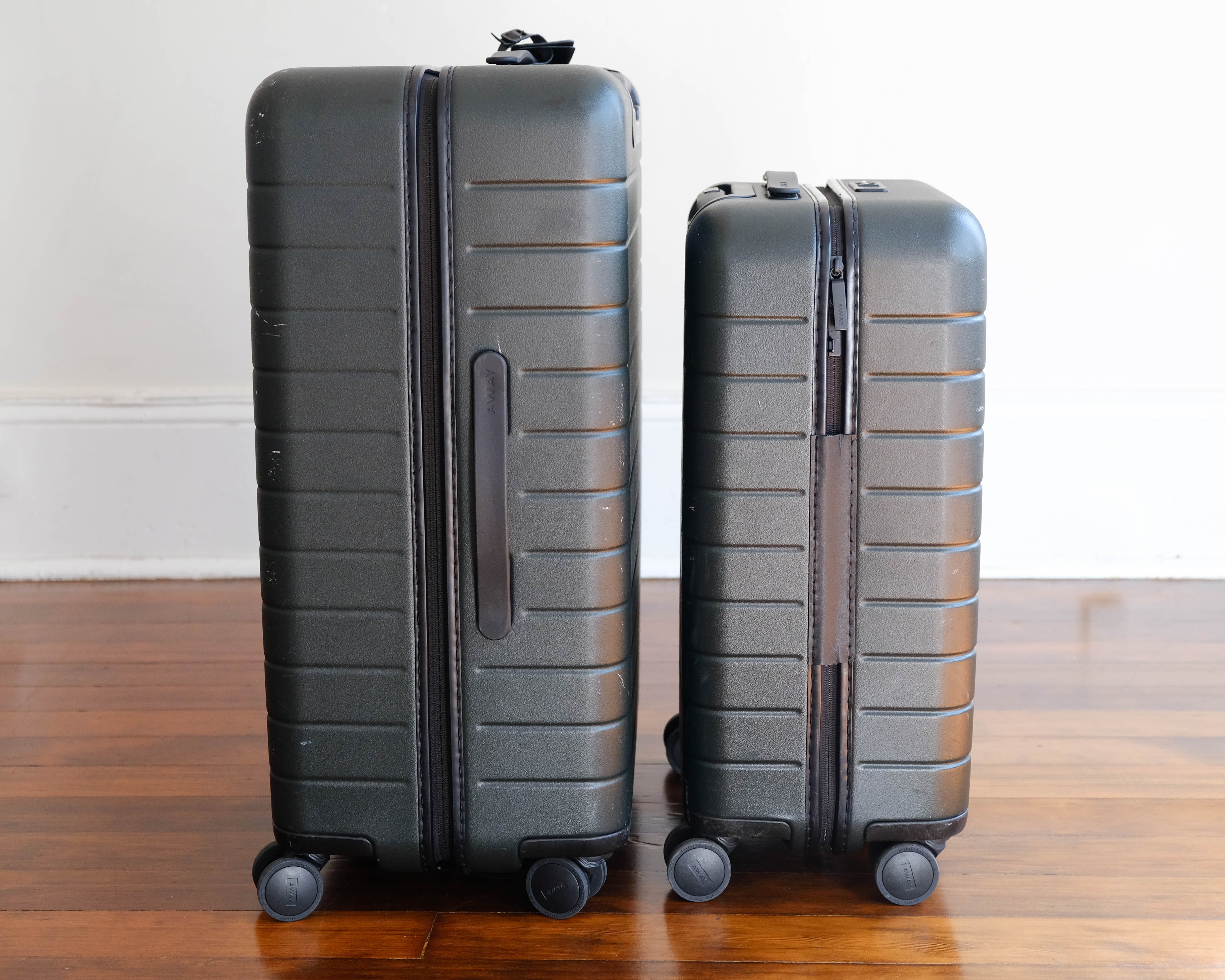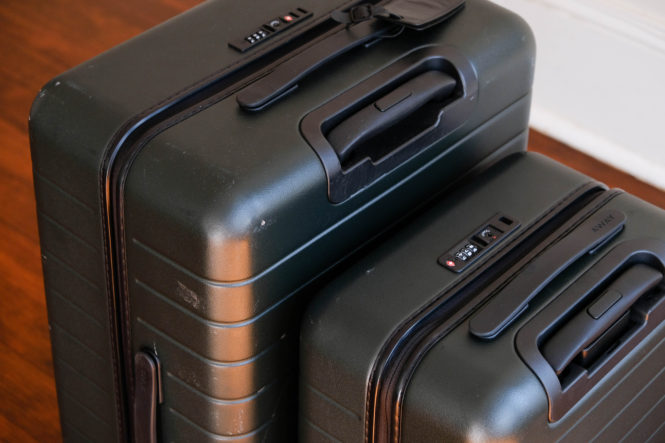One of the most popular articles on this site for several years now has been my review of Away luggage and its comparison to the offerings from Muji. Now that I’ve had two years to travel with their suitcases I figured it would be a good time to bring back my One Year Later series, in which I re-review items after quite a bit of use.
I have two Away suitcases in my rotation – one is the classic carryon, and the other is the “Medium,” which I only use for long trips. While I haven’t traveled too much in the past few months, over the course of 2017 and 2018 I put some decent miles on these. The carryon gets significantly more use than the larger checked bag because I tend to pack light – I’d say the carryon has been on 20+ trips, while the “Medium” has probably only been on a handful (though checked bags generally have to put up with more abuse). So while they’re definitely broken in, I’d hope that both would be useable for many more years.
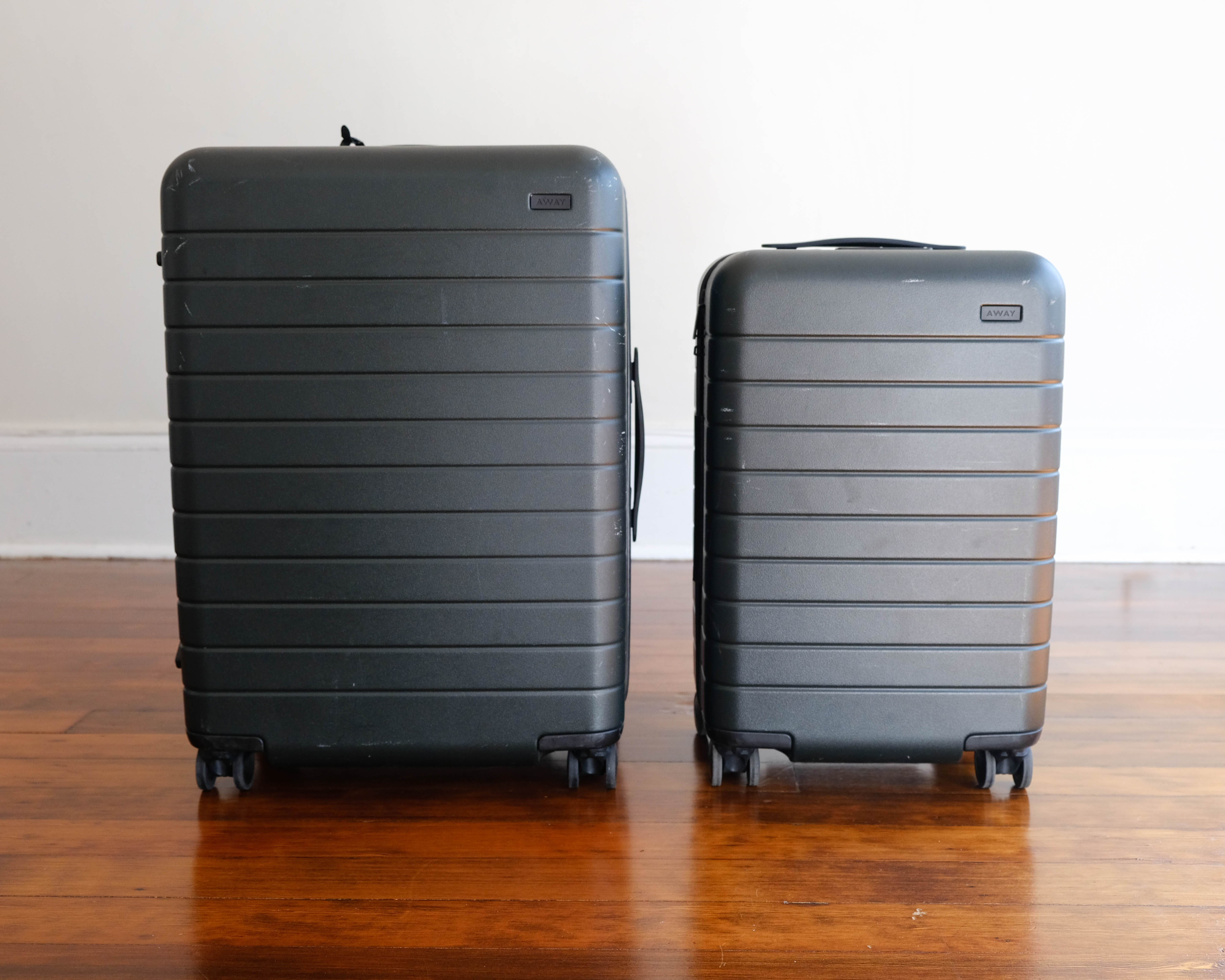
Since my first post on Away, the brand has exploded into everybody’s first choice for new luggage (or so it seems). Every #influencer on Instagram is posing with one, brick and mortar stores have popped up in five locations (including San Francisco), and the product line and color options have grown substantially. Away still makes many bold claims about creating the “perfect” suitcase; I was skeptical of this claim when I started using this product, and now let’s take a closer look to see how the suitcases – and this promise – age.
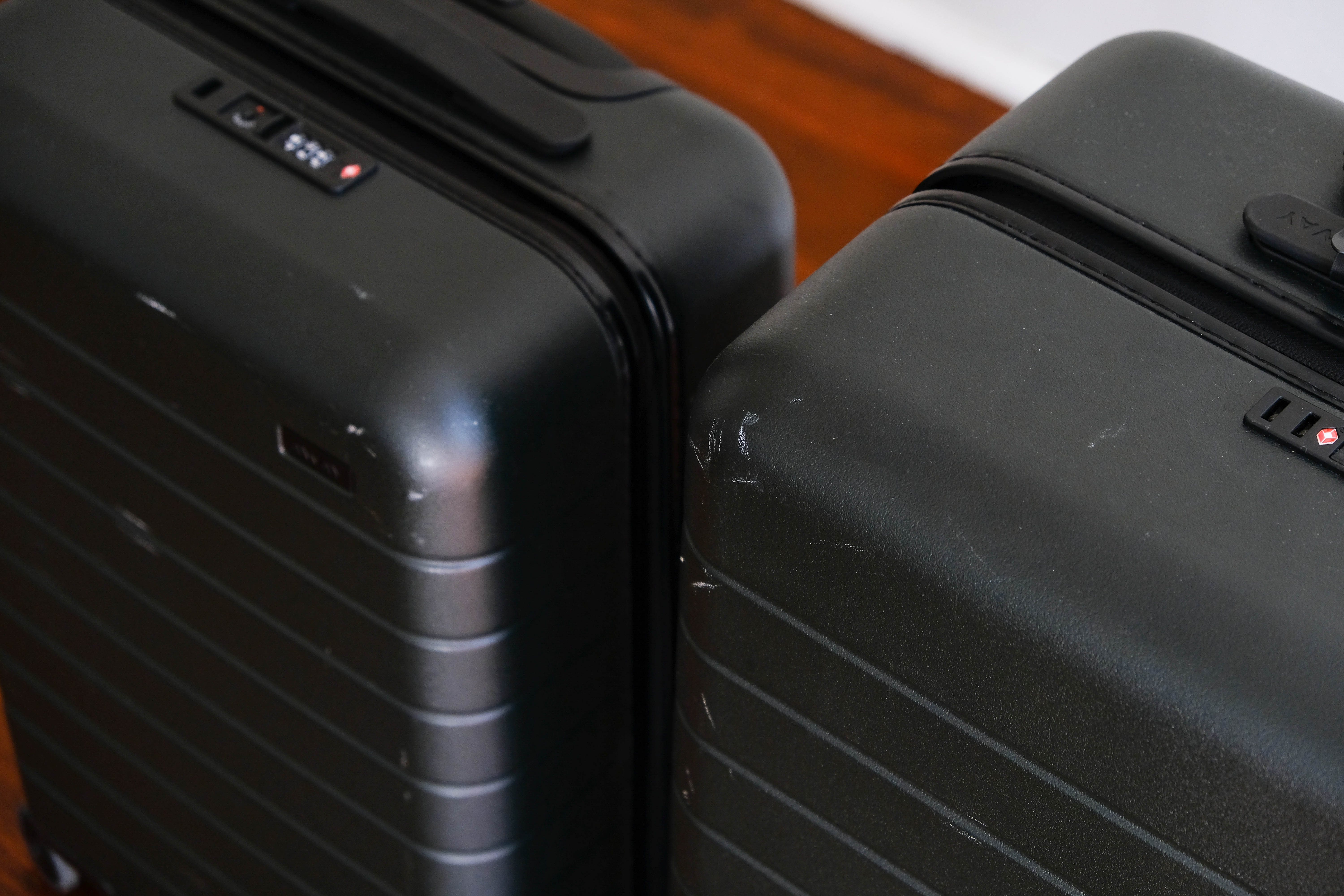
The Outer Shell
The first thing you might notice about the outside of these suitcases are the dings and marks. Now, just to be clear, I don’t mind this at all. I would expect this to happen with pretty much any material, and to me these scuffs are signs of a product being well-used. I have seen customers complain about scuffs in reviews but I’m not bothered by them in the slightest. As long as the shell is intact and working well – which it seems to be doing so far – then I’m fine with some nicks and bruises. Like a good pair of shoes, they just add a bit of personal character. They could also probably be scrubbed off to some degree, but I don’t care enough to bother.
Now, closer inspection will reveal an area that goes beyond “wabi sabi wear and tear” and into plain old damage. On the “Medium” bag – which I use a lot less – you can see that the “bumpers” (I don’t know what else to call them) on the side of the bag have started to come off. I don’t think these little pieces are that important in and of themselves, but the bigger issue is that when they fall off they expose holes in the shell. This could allow dirt or moisture to get in, and seems like it could create a weak point prone to cracks. I haven’t seen any further issues stem from this yet, but I’m keeping an eye on it.
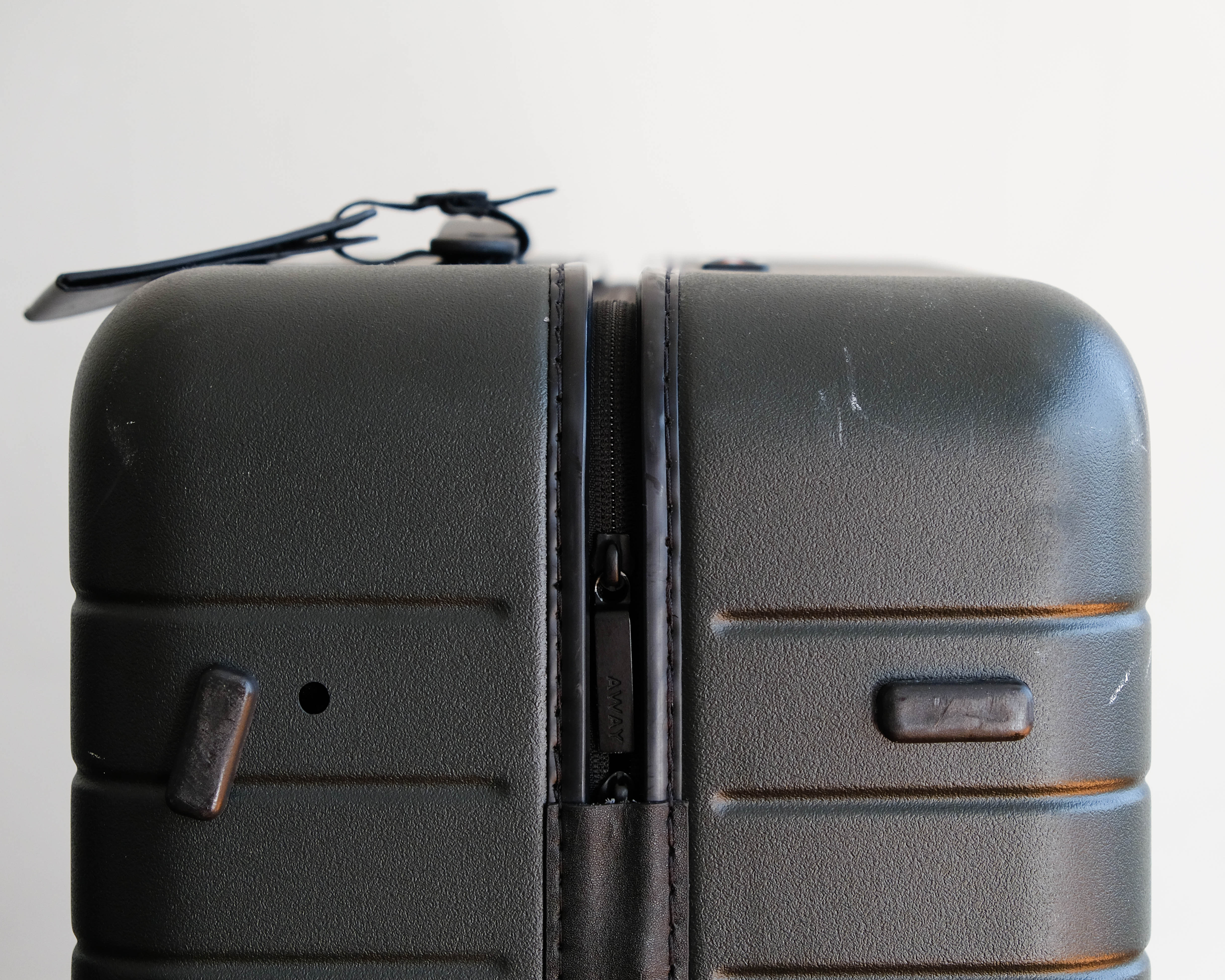
Another common point of failure in luggage is zippers – I’m happy to say that I haven’t had any issues here so far. I don’t really use the TSA locks much (though perhaps I should) but everything seems to be working fine there as well.
Looking Inside
On first glance, the inside of the suitcases seem fine. The lining is still intact and everything looks pretty much the same. The interior bag compartment is holding up well, in part because I don’t use it much (I prefer the interior design of the MUJI, as I mentioned before). On closer inspection, though, you will find that the plastic pieces that hold the “compression system” to the outer shell have become disconnected. This means that the compression straps don’t really secure anything, they just float loosely with the lining. I have tried to glue these back in place (they were only held down with glue to begin with, it seems) but haven’t found a glue strong enough to hold up to the tension from the cinching. I should note that Away does offer a lifetime warranty on anything functionally wrong with the luggage, so I suppose I could take it in to be fixed.
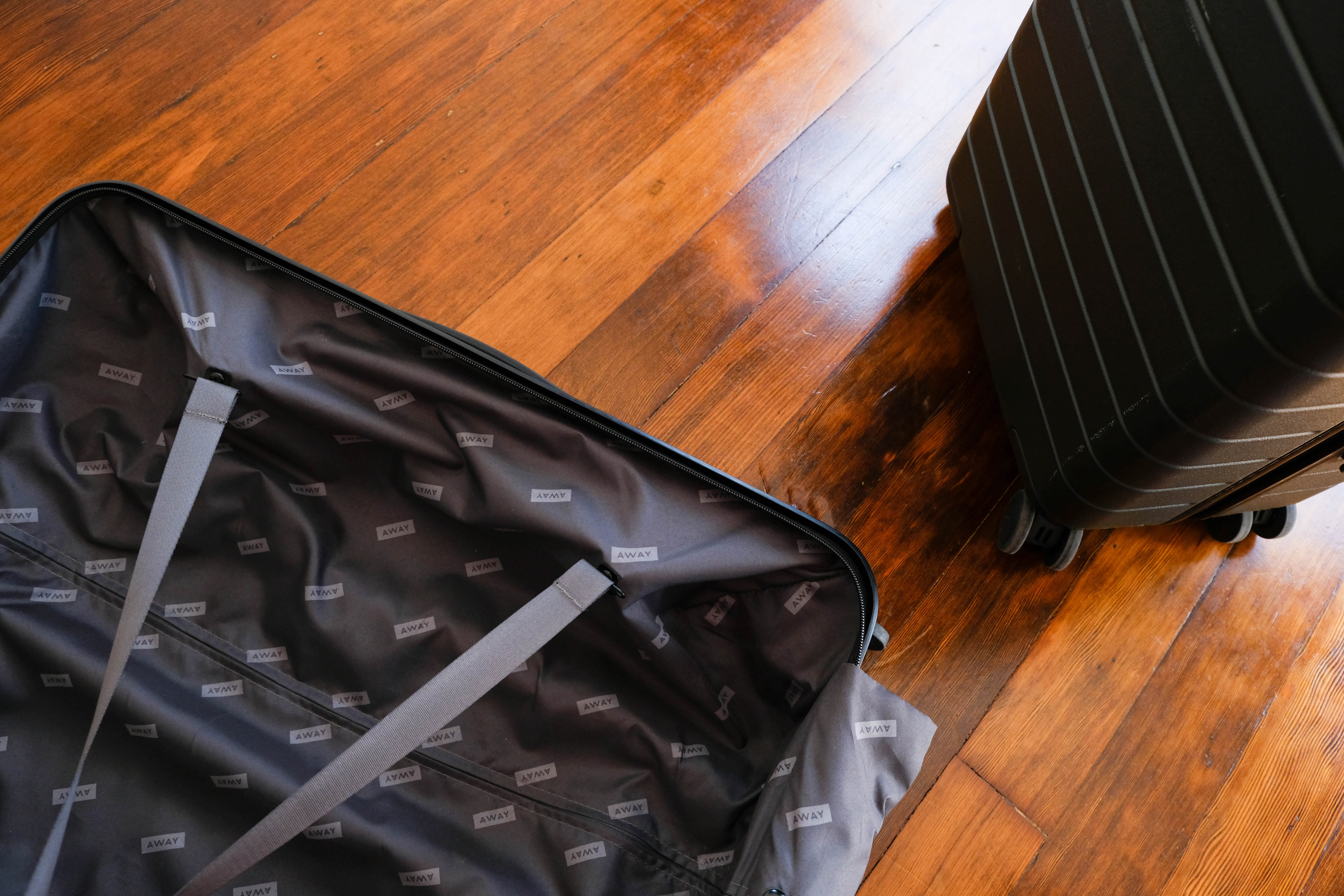
The Battery Case
In the time since my first Away purchase, FAA regulations around lithium batteries have changed. The batteries are no longer allowed to be kept in carryon bags and must be removed before boarding. While I find that this isn’t always enforced, most gate check attendants can recognize the prolific Away carryons and will ask you to remove the battery and keep it with you. This isn’t a big issue currently because Away redesigned their products to have ejectable batteries (although it is one more thing to have to carry on your person). Mine was from before this redesign, so I had to be sent a new battery case/handle, which I installed myself. They sent it to me free of charge and it wasn’t too hard to install, but it was a bit of an annoyance. But like I said, the good news is that this doesn’t apply to new customers. Just be sure you have a bag or a large pocket to hold the big battery once it’s ejected.
Ultimately, I’d still prefer a wheel lock system in this spot (like the MUJI) than a battery and the hassles that come with it, but I also can’t deny that it is convenient to be able to charge a phone easily. With that said, since the battery has to be stored on your person during travel anyway, it’s not really that much more convenient than having a portable charger battery that isn’t connected to your luggage. Dealing with four unlocked wheels while on public transit is like riding the mechanical bull at a dive bar, so the wheel lock continues to be my preference.
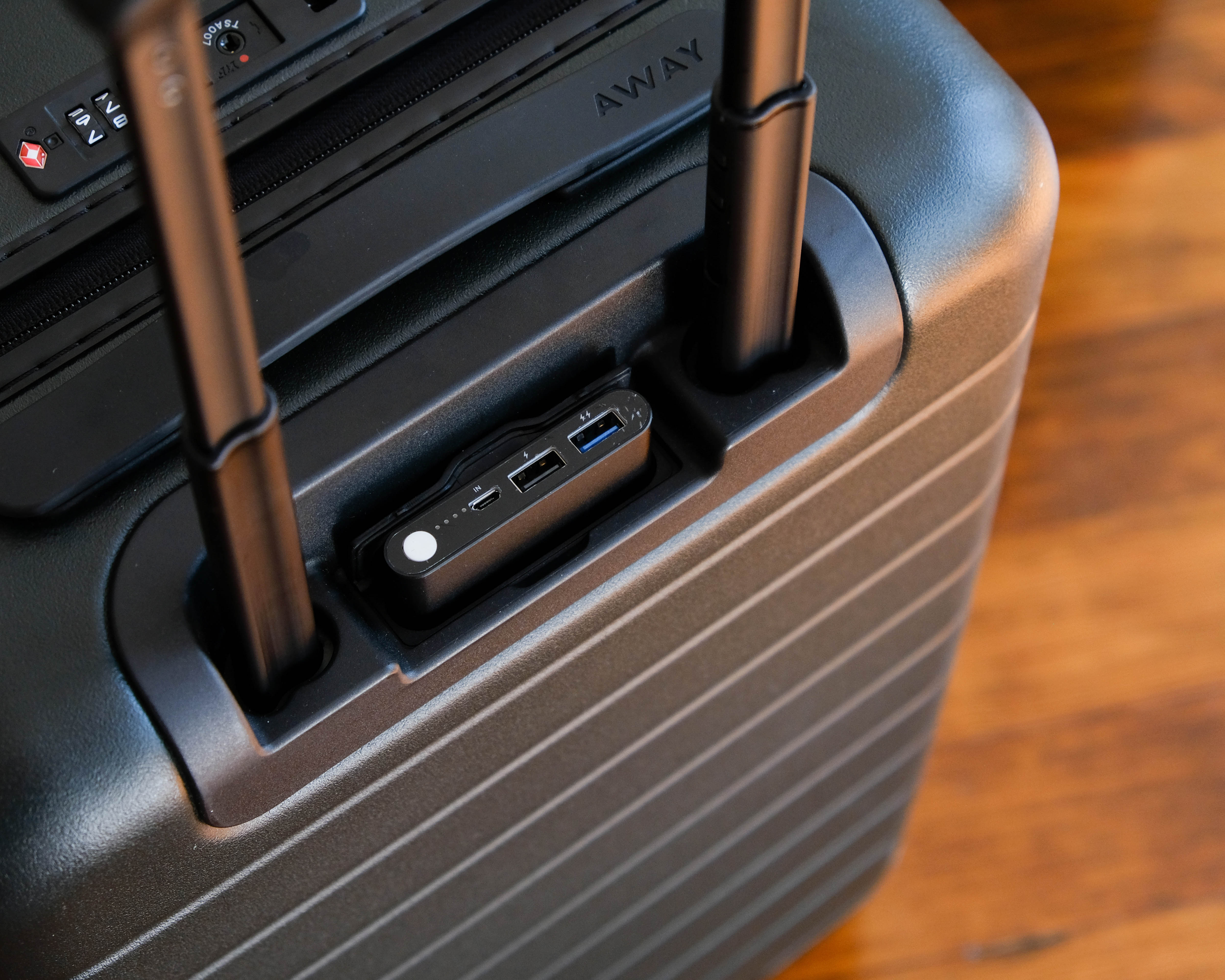
Conclusion
While my Away bags aren’t aging as gracefully as I would have hoped, they’re still usable. The biggest issue for me is the internal components that have come unglued, as this makes it more difficult to use. I’m lucky that I have an Away store within walking distance from my apartment, so it wouldn’t be too hard to take it in and get it repaired. While I’m glad that Away does offer this warranty, it would probably be a big pain for most people to ship a suitcase back to them for repairs.
I’ll admit that I’m judging them harshly, but given the claims that the brand makes I think it’s only fair to do so. Either way, it seems that using an Away carryon is a bit of a status symbol – I’m often stopped in airports and asked if my luggage is from Away, and those with the same carryon usually give me a knowing nod.
Overall I think Away makes decent products and you could definitely do a lot worse for the price, but I don’t think they stand up to the company’s claims of a perfect suitcase. To me, a perfect suitcase should continue to be fully functional after years of use, even if it shows signs of wear. All told, Away’s products are reasonably good and look nice but there’s a lot of marketing fluff as well. I still think the MUJI is a better overall value – better price and better internal layout give it an edge. But the Achilles’ heel of the MUJI (and the main reason I generally stick to the Away carryon) is the difference in the handle – the MUJI is just too short for me to use comfortably. If you’re over 5’9″ or so, you will likely find the Away carryon to be more comfortable to maneuver (until the need for a wheel lock arises).
So while the hunt for a truly perfect suitcase goes on, Away and MUJI both offer solid options for the price. Just don’t expect miracles from either and you’ll probably be ok. If you’re looking to buy from Away, my referral link will get you $20 off (you’ll see the discount at checkout), so that brings the price down closer to MUJI. No matter what you decide on, just make sure you use it often.
